An Interdisciplinary Conference
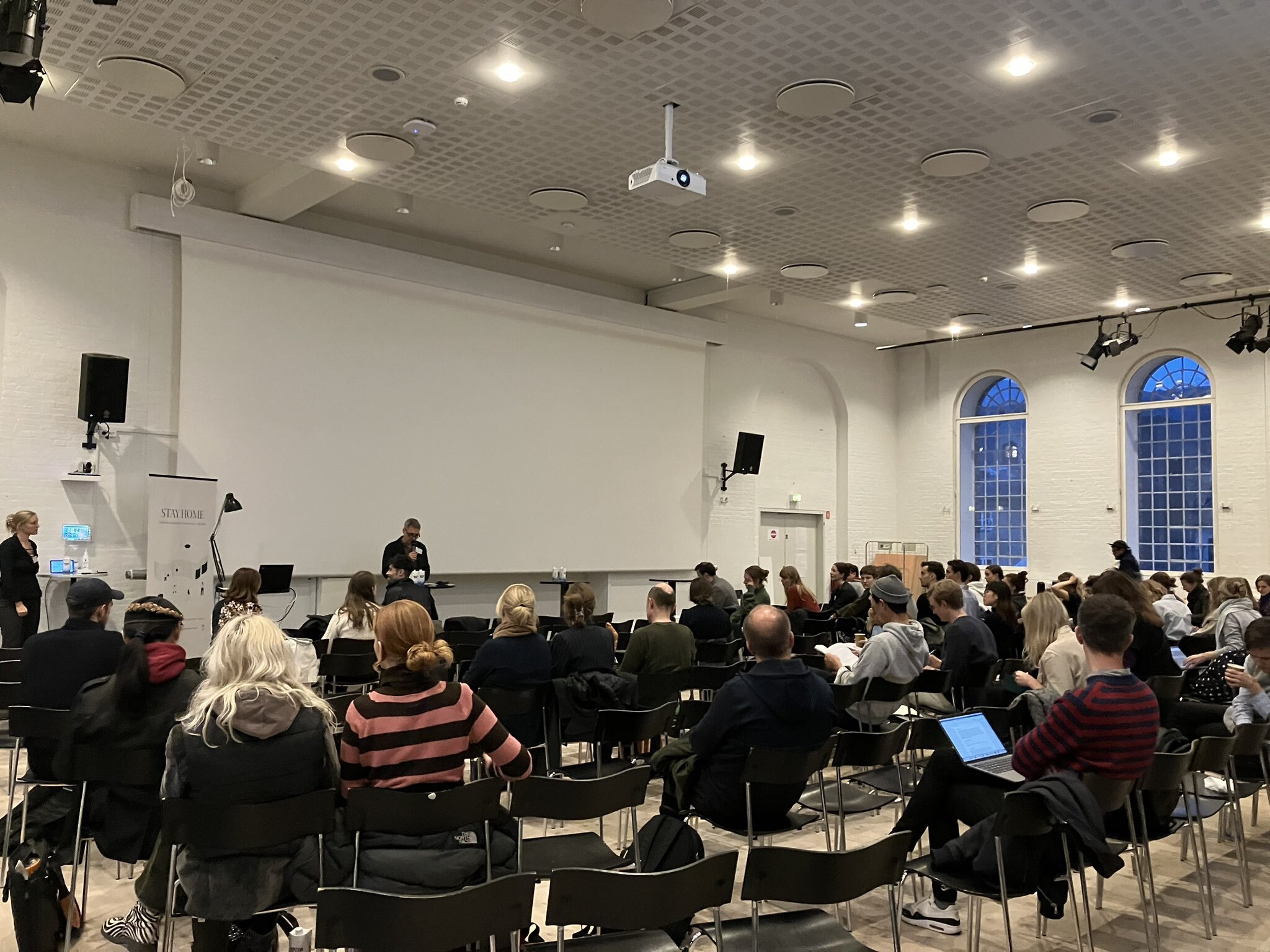
The conference kicked off Thursday November 10 with an introductory speech by PI of STAY HOME, Mette Birkedal Bruun. She presented the STAY HOME project and the different institutions and disciplines involved in it. A perfect way to set the stage for a truly interdisciplinary conference. The conference included scholars and presentations from the four disciplines involved in the STAY HOME project: Architecture, History, Science and Technology Studies, and Theology, but also scholars from Anthropology, Religious Studies, Interior Design, Literary Studies, Philosophy, Sociology, and Cultural Studies. Thus, we touched upon many different disciplines and subjects. We found both similarities, differences, and connections between the different approaches to Home in the many fruitful and vibrant discussions across those two days.
Interdisciplinary encounters
For the conference, we invited four distinguished keynote speakers and selected thirteen presentations through a Call for Papers. The keynote speakers were Professor within in Science and Technology Studies at University of California Irvine, Paul Dourish, Associate Professor of Theology at Princeton Theological Seminary, Hanna Reichel, Professor of History at Oxford Brookes University, Joanne Begiato, and Professor of the History of Architecture at Princeton University School of Architecture, Beatriz Colomina. Rooted in their individual disciplines, each keynote speaker contributed with their perspective on the home. Combined, they presented a multifaceted picture of the home as both a place of moral development, as a normative ideal, as a phenomenon constructed by emotions and relationships, and as a place of labour, leisure, and surveillance.
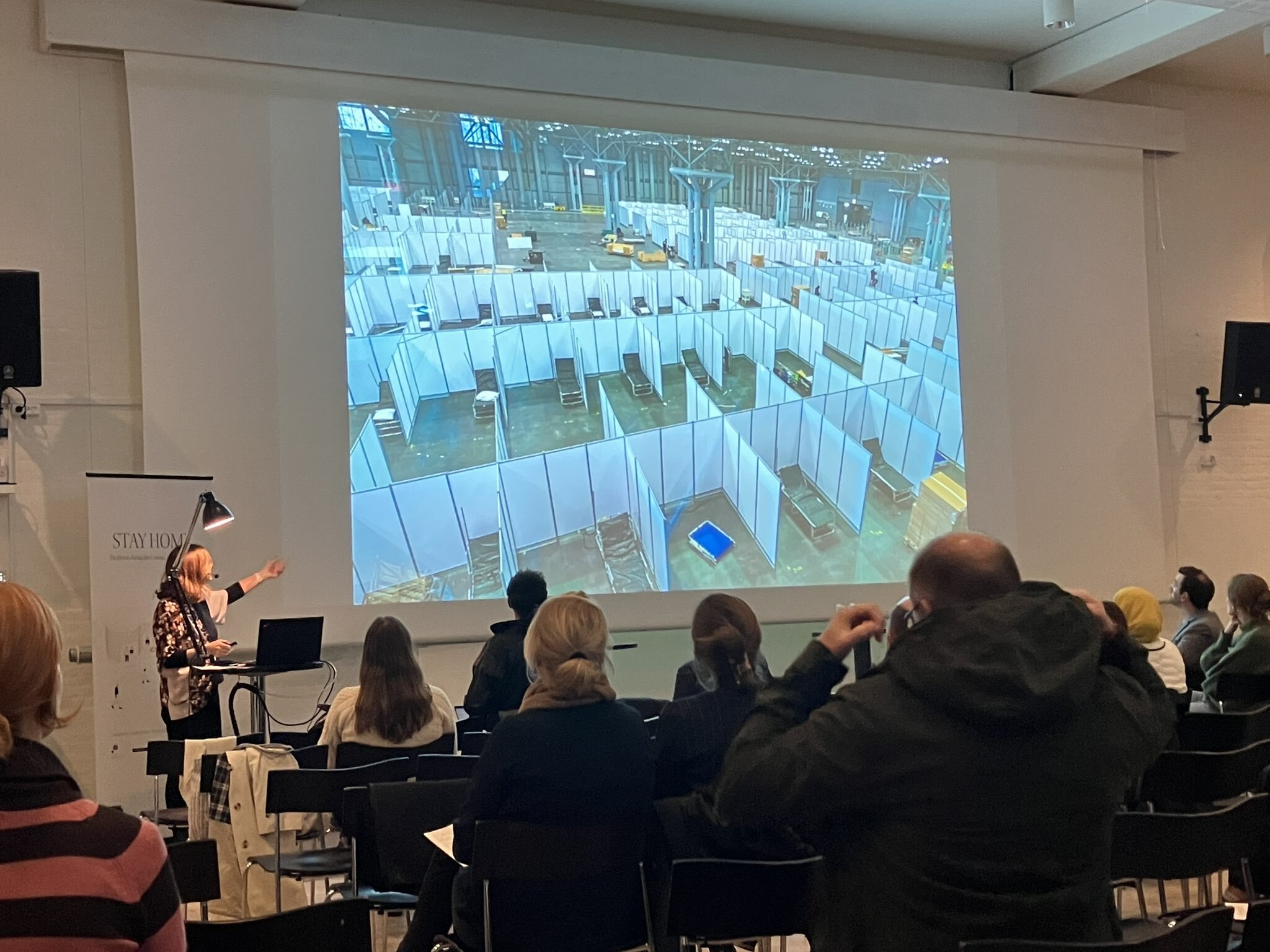
The additional thirteen paper presentations coupled in five different sessions added to the multifaceted picture of the home. These sessions were composed of presentations from different disciplines, making each session interdisciplinary. The paper presentations were coupled under five different titles: Away from Home, Social and Domestic Practices, Home and Society, (Re)conceptualizing Home, and Invasion of the Home.
When sixty-five researchers and practitioners from different fields and disciplines are gathered, some truly inspiring discussions and interdisciplinary encounters become possible. Participant and speaker at the conference, Associate Professor of interior design at Royal Melbourne Institute of Technology, Suzie Attiwill, who joined us all the way from Australia, describes the interdisciplinarity of the conference:
“Something happened at this conference that was more than being simply interdisciplinary – or perhaps it was truly interdisciplinary – in that the concept of home brought a diversity of researchers and their research together, where there was a shared concern.”
This shared concern was the home in past, present, and future. The outcome of interdisciplinary encounters might not always be visible or even consciously perceived by the involved researchers, but might still have an effect on how they think about or proceed with their own research. A historical perspective on the home might inspire an architect, and a Science and Technology Studies scholar might get new ideas when listening to a Theologian. When asked about their experiences and insights of the conference, three participants highlighted how they gained new insights and ideas from scholars from different disciplines than their own. PhD Fellow in History at STAY HOME, Katrine Rønsig Larsen, who is studying domestic violence, explains what struck her about the architecture of homes:
“Paradoxically, the home is actually not that prominent in my own project. However, I found it interesting how the home and its architecture already from when it is planned and built has an ideology behind it. This became clear across presentations at the conference. I do not know if it will actively play a role in my project, but it is important to think about what the architecture of the home does e.g. in situations of violence. The ideologies behind homes affect policies on housing, homes and family, and furthermore how people behave in their homes. The Covid-19 pandemic has made some of these ideologies of home visible.”
Suzie Attiwill pointed to the value of historical perspectives to her own architectural research:
“In the briefing for the conference by PI of STAY HOME, Professor Mette Birkedal Bruun, the emphasis on re-positioning history as a provocation relevant to current critical concerns was thought-provoking and this refrain was felt throughout the conference. I understood this as a shift from thinking about history as a teleological account of what has happened to a practice that offers ways of re-thinking and re-orienting the present in critical and productive ways.
An example of this, which was particularly poignant in relation to my own research on residential care was Professor Begiato’s keynote “Making the (un)happy Home: Emotions, Bodies, and Spaces in eighteenth- and nineteenth-century Britain”, which presented empirical, historical research that exposed how the environment of the home through objects and arrangements became vehicles for the perpetuation of violence.”
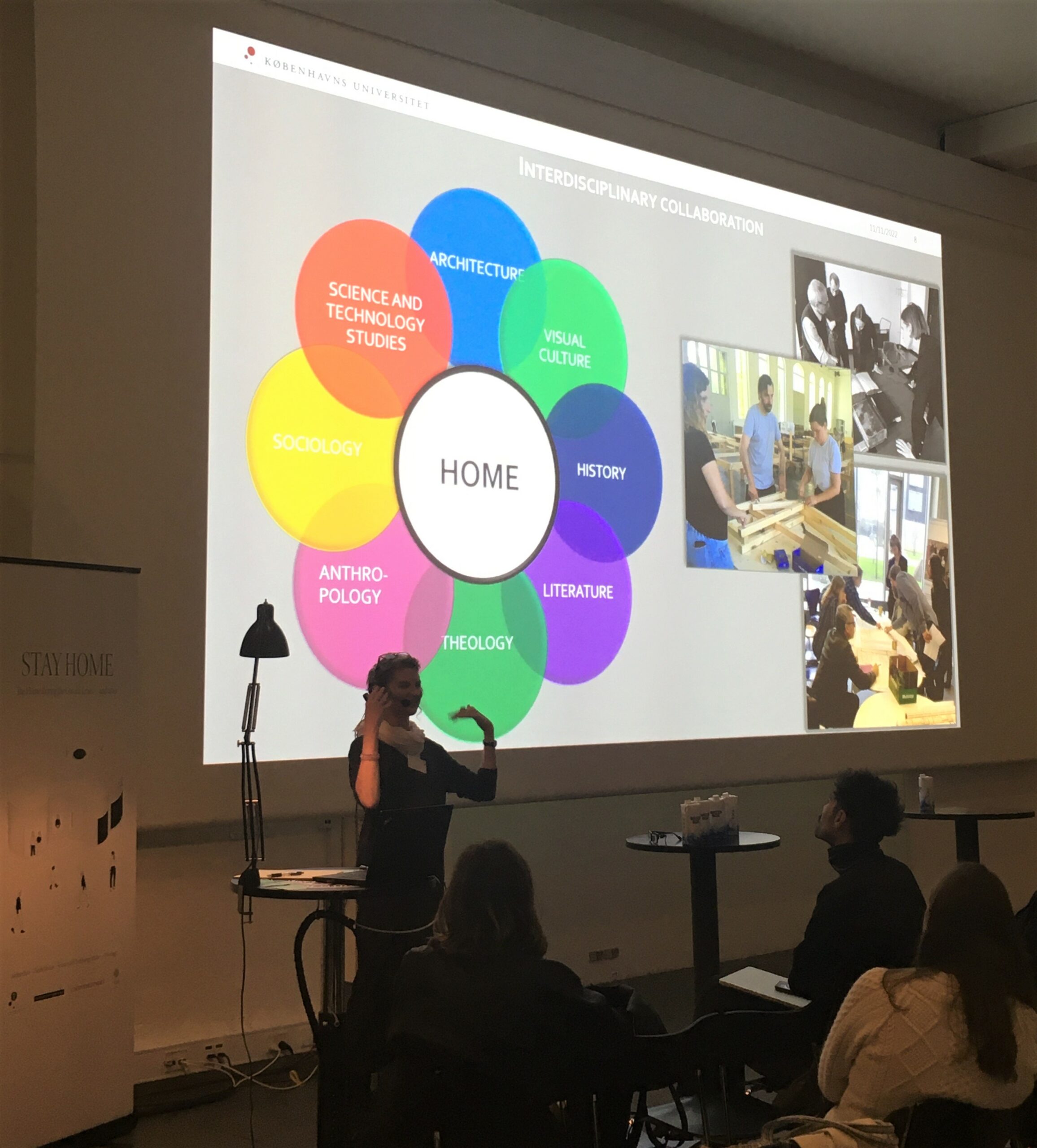
Also PhD Fellow in Science and Technology Studies at STAY HOME, Katja de Neergaard, who studies experiences and practices of digitalisation and privacy in the home, gained new inspiration from a different field than her own:
“I really liked Hanna Reichel’s keynote. I did not know much about Theology before I entered the STAY HOME project, and I think I was quite surprised with its potential to examine emotions. Such a perspective is actually quite important in my own project, but I have paid more attention to the perspectives within Science and Technology Studies that explore practices and materialities. However, it has become quite apparent in my empirical material that many people felt this lurking uncertainty and ambivalence during the lockdown, which has made me realise that I could benefit from exploring the affect-theoretical perspective, that Reichel included in their lecture, to capture emotions at home during lockdown.”
These are three specific examples of how interdisciplinary exchanges can spark inspiration and new ideas. In the STAY HOME project, we experience interdisciplinary collaboration as both challenging and rewarding and we continue to learn a lot; the conference strengthened this impression.
The idealised home
The conference indeed presented many different approaches to home. One notion of home that was discussed in many presentations, was home as an ideal. In different ways, many speakers touched upon this idealisation of home and showed that it can be, for example, desired, utopian, devastating, absent, or limiting. Thus, even though it might not be experienced in real life, the idealisation of home served as a kind of common denominator across presentations and discussions. Katja de Neergaard explains:
“As a scholar dealing with feminist studies, I would argue that the idealised notion of home is rarely experienced in real life, but is merely a romantisation of the home as a safe, private, and comfortable space. Thus, I tend to discard this notion, when I meet it. However, at the conference many presentations related to this idealised notion of home as either a metaphor, norms, or a way of communicating home. It might actually be of value to pay more attention to ideals of home as they play a powerful and defining role in our experiences of home, because everyone relates to them somehow.”
Katrine Rønsig Larsen elaborates: “I was a bit overwhelmed by the fact that home can mean so many different things. Nevertheless, this idealisation of the home somehow concretised specific cases of home. The home does and is different things in different contexts, but many experiences of home are shaped by the relation to this idealisation of the home.”
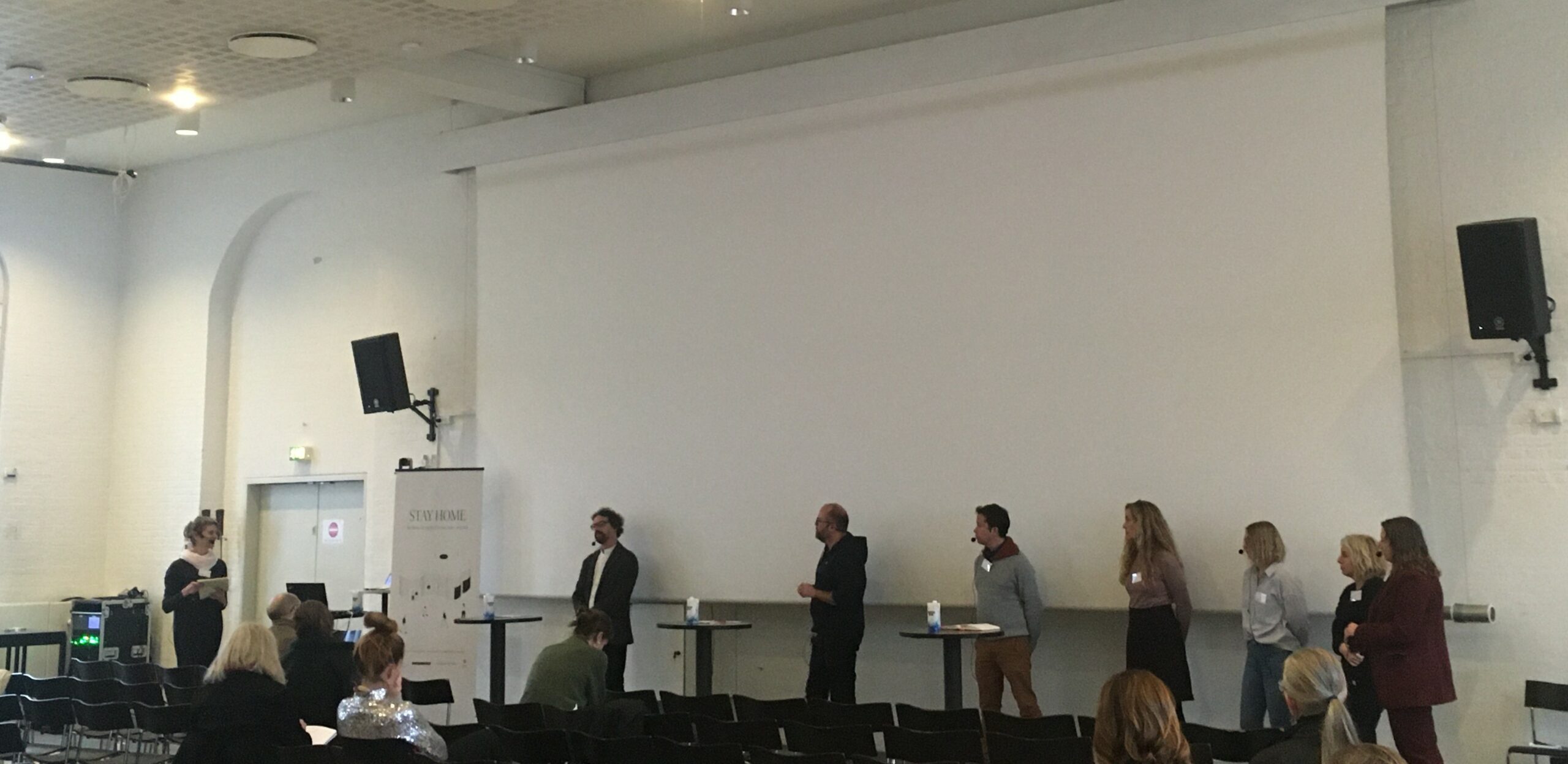
Suzie Attiwill also experienced an attention to and critique of the romantisation and idealisation of home: “In conversation with others, the provocation that maybe we should no longer stay with the concept of ‘home’ was frequently raised. It became evident through the presentations that ‘home’ is a utopian ideal shaped by power dynamics and that while a hierarchical ecosystem can provide certainty and therefore comfort, at the same time a state of power is maintained and enacted. To not stay with the concept of ‘home’ is not to suggest there is another better concept, as this continues an investment in the possibility of an ideal state. The alternative it seems is to stay with a criticality and invent new modes of inhabitation that redefine living.”
When researching and discussing home, we need some kind of definition of home in order to be able to talk about it and understand it. At the same time, it is important to pay attention to the consequences and power of definitions and ideals of home. Indeed the presentations of the conference showed exactly how homes can be very different, and differently coded, in different contexts.
An in-person conference
To many of the participants this conference was one of the first in-person conferences they attended post-Covid. We were happy to have participants from both Europe, America, Asia, and Australia present at the conference. Under Covid we have experienced the possibilities and challenges of online meetings and conferences, and in some cases they serve the cause. We did also have online participants at this conference, who could listen in on the sessions without spending time and resources on travelling. Nevertheless, we really enjoyed being present together in Copenhagen. Participant and speaker at the conference, Assistant Professor in architecture at National Quemoy University in Taiwan, Hsin-Yin Huang, explains how he enjoyed the participation of a live audience:
“What surprised me was the full-hearted participation from the audience, most of whom had also contributed with presentations of their own research at the conference. I felt an attention from beginning to end. I think the organisers of the conference had done a good job of selecting papers and presenters. I am glad to have been part of this wonderful event. And personally, I am always so happy to be back in Europe.”
Another thing made possible when hosting an in-person conference, was to visit the exhibition BEHAVIOUR/WELFARE, to which the STAY HOME-team has contributed with an installation. The exhibition is located at the Royal Danish Academy in the room right next to where the conference took place. Thus, on the first day of the conference, the STAY HOME team presented their research behind and interdisciplinary collaboration on the installation and afterwards invited the participants to see the exhibition.
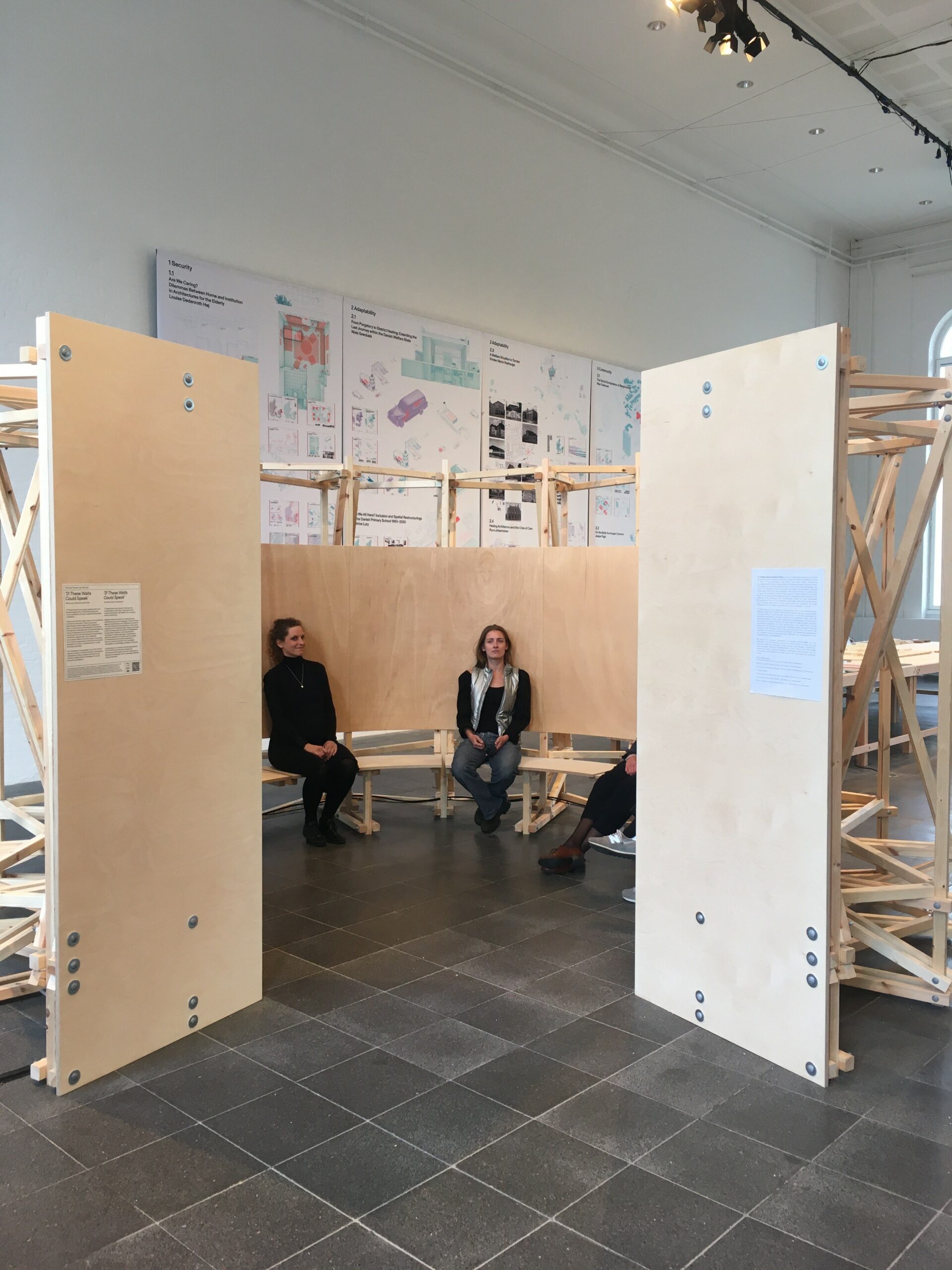
The exhibition BEHAVIOUR/WELFARE spotlights how architecture and design can improve health and welfare. The contribution by the STAY HOME-team, IF THESE WALLS COULD SPEAK explores multifaceted experiences of home during the corona pandemic through spatial and auditory components. Three consecutive soundscapes echo along a whispering wall designed to make the sound travel. The closer you sit to the wall, the louder the sound. The soundscapes are made of fragments from interview recordings documenting different experiences from the first lockdown in Denmark. They recall themes of uncertainty, collapse of everyday contexts, and ways in which digital technologies mediated or disrupted interactions. Thus, IF THESE WALLS COULD SPEAK focuses on the mental and social well-being – or lack of – in the home during the pandemic.
We were happy to share and discuss our work on the installation with the participants of the conference. The installation has been a boundary object around which we have structured our interdisciplinary collaborations and discussions in the STAY HOME-project the past year. As such it is an example of a, to many disciplines, untraditional outcome of research collaboration.
All in all the conference was a great success both socially and scholarly. The outcome and ideas created through interdisciplinary encounters keep surprising us and we want to thank all presenters and participants for their valuable contributions. We are looking forward to more dialogues and collaborations on studies of home in the future.
We thank the Carlsberg Foundation for funding STAY HOME and our activities. For the installation, we have received a sponsorship from STARK and vital help and inspiration from Finn Svanholm, Anders Drøidal (OFR Design + Arkitektur), Peter Alexander Bullough (SUPERNATURE), Olivia Toftum, the STAY HOME perspective panel, Standard Practice, Hverdagens Digitalisering (AAU, Veluxfonden), all our interviewees, and GENTRÆ who will re-use the wood after the exhibition period.